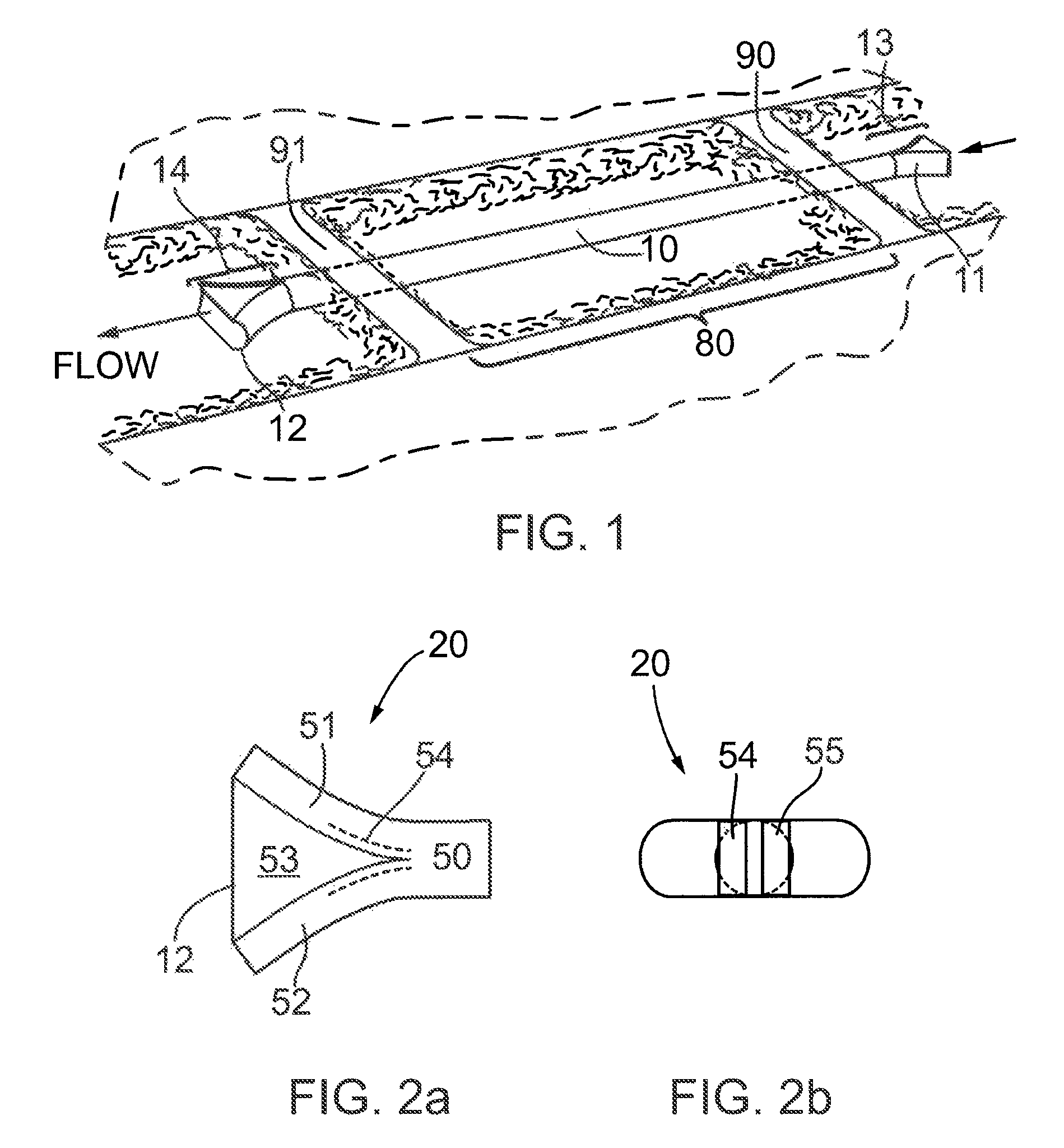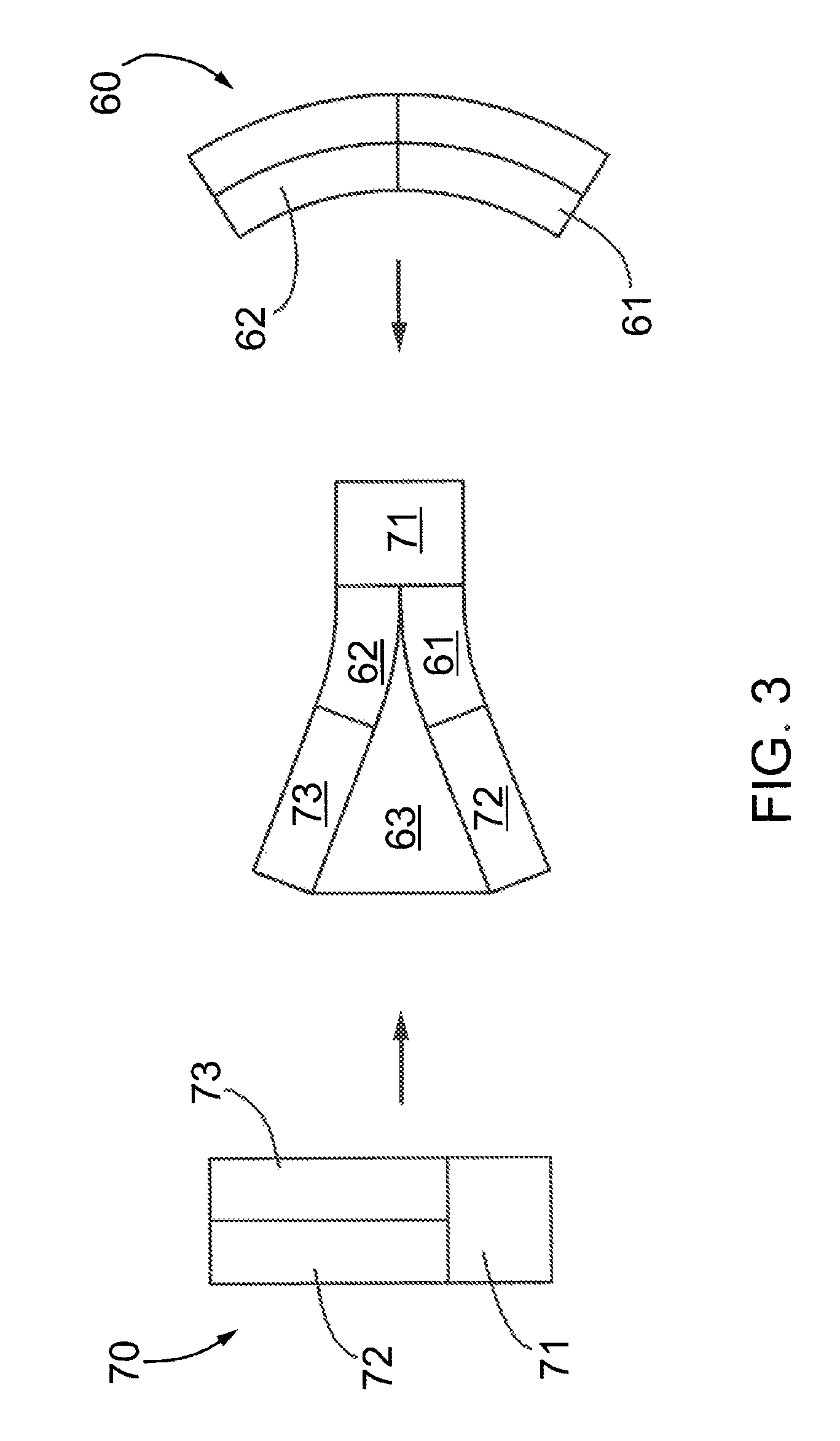High capacity water diversion conduit
a technology of high-capacity water diversion conduits and conduits, which is applied in marine site engineering, applications, lighting and heating equipment, etc., can solve the problems of limited flume flow capacity, significant downstream environmental impact, and inability to provide the required capacity economically
- Summary
- Abstract
- Description
- Claims
- Application Information
AI Technical Summary
Benefits of technology
Problems solved by technology
Method used
Image
Examples
Embodiment Construction
[0044]Generally, the present invention provides a fluid diversion conduit for temporarily diverting stream flow, for example to provide construction access to a portion of the streambed. With reference to FIG. 1, an upstream cofferdam 90 generates a head of hydraulic pressure upstream of the cofferdam 90, initiating flow through the diversion conduit 10. Stream flow therefore enters conduit 10 at the conduit inlet 11, is conveyed past the diversion site 80 and through a downstream cofferdam 91, where flow is returned to the natural streambed upon exiting the conduit 10 at outlet 12.
[0045]Generally, achieving higher hydraulic capacity in a flowing system is accomplished by reducing the hydraulic losses of the system. The types of hydraulic loss typically experienced in water bypass ducts include: inlet loss; skin friction loss; and exit loss. The inlet loss may be minimized by a smoothly contoured inlet configuration. This practice is widely used in culverts and other drainage system...
PUM
 Login to View More
Login to View More Abstract
Description
Claims
Application Information
 Login to View More
Login to View More - R&D
- Intellectual Property
- Life Sciences
- Materials
- Tech Scout
- Unparalleled Data Quality
- Higher Quality Content
- 60% Fewer Hallucinations
Browse by: Latest US Patents, China's latest patents, Technical Efficacy Thesaurus, Application Domain, Technology Topic, Popular Technical Reports.
© 2025 PatSnap. All rights reserved.Legal|Privacy policy|Modern Slavery Act Transparency Statement|Sitemap|About US| Contact US: help@patsnap.com



